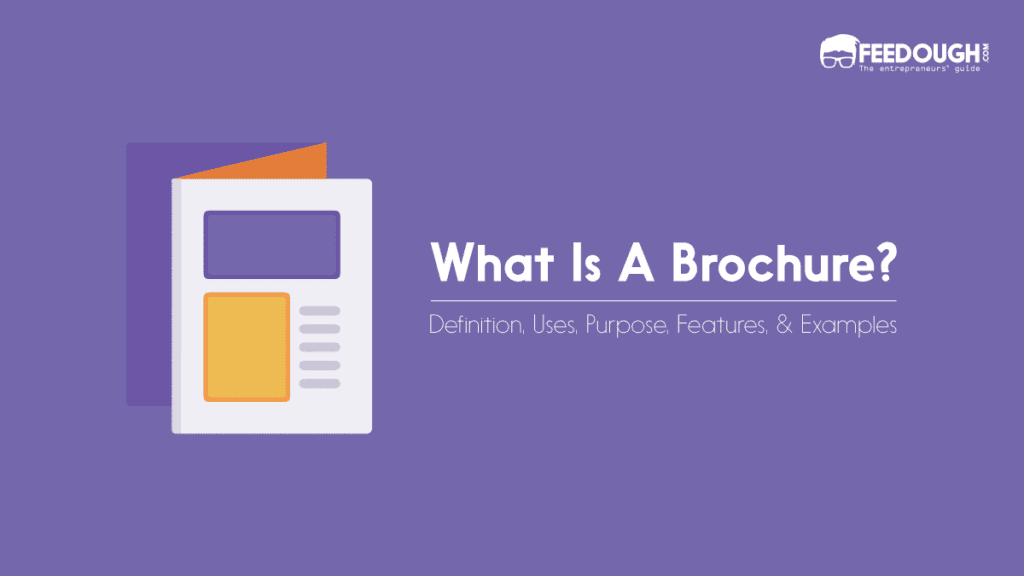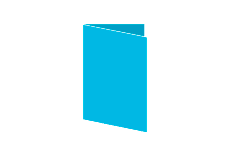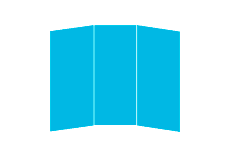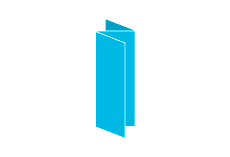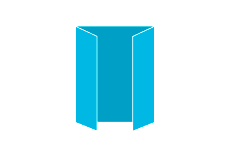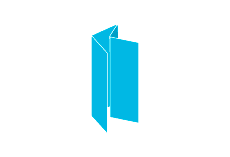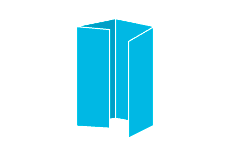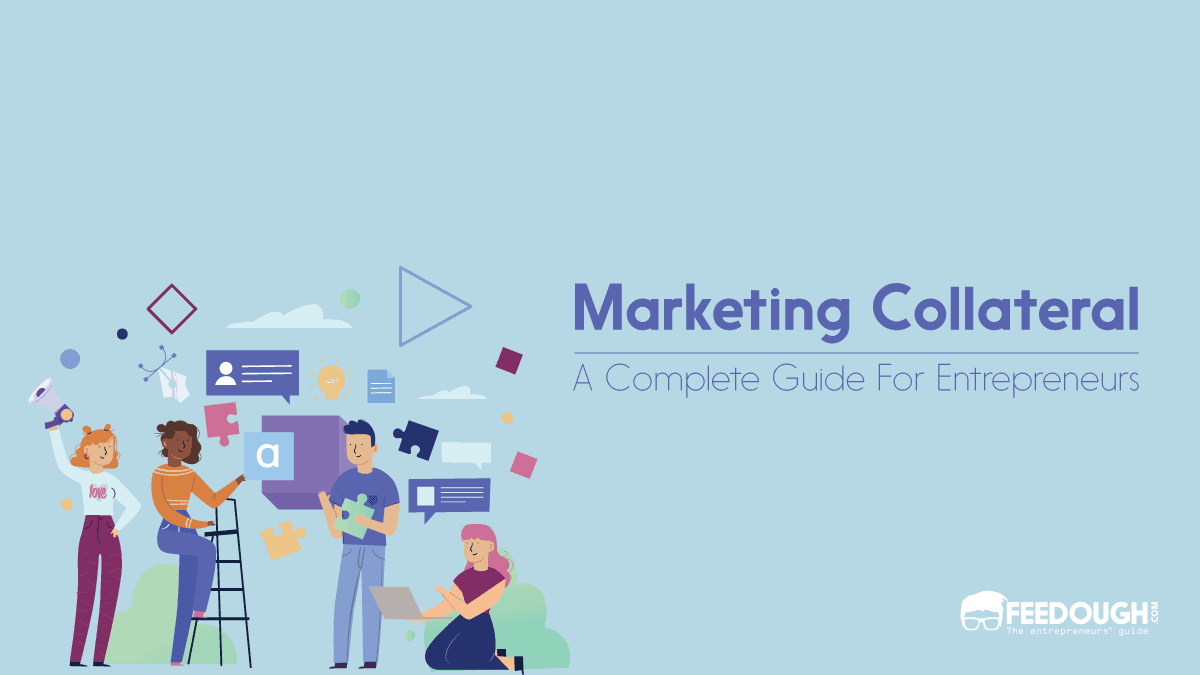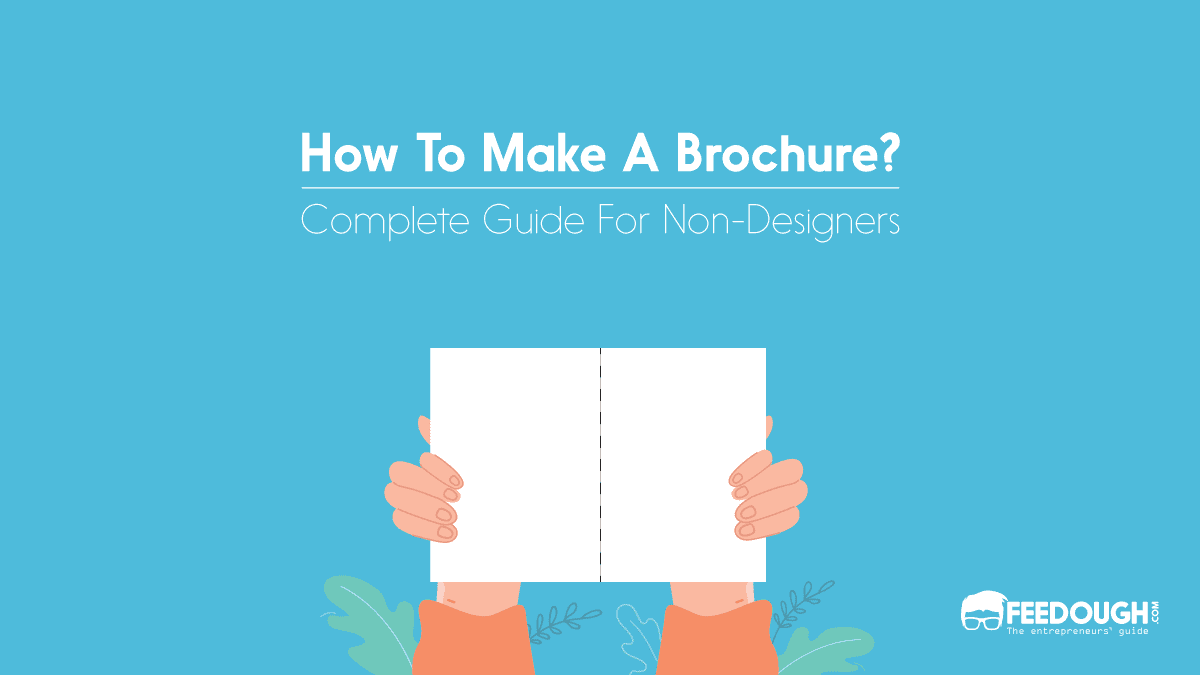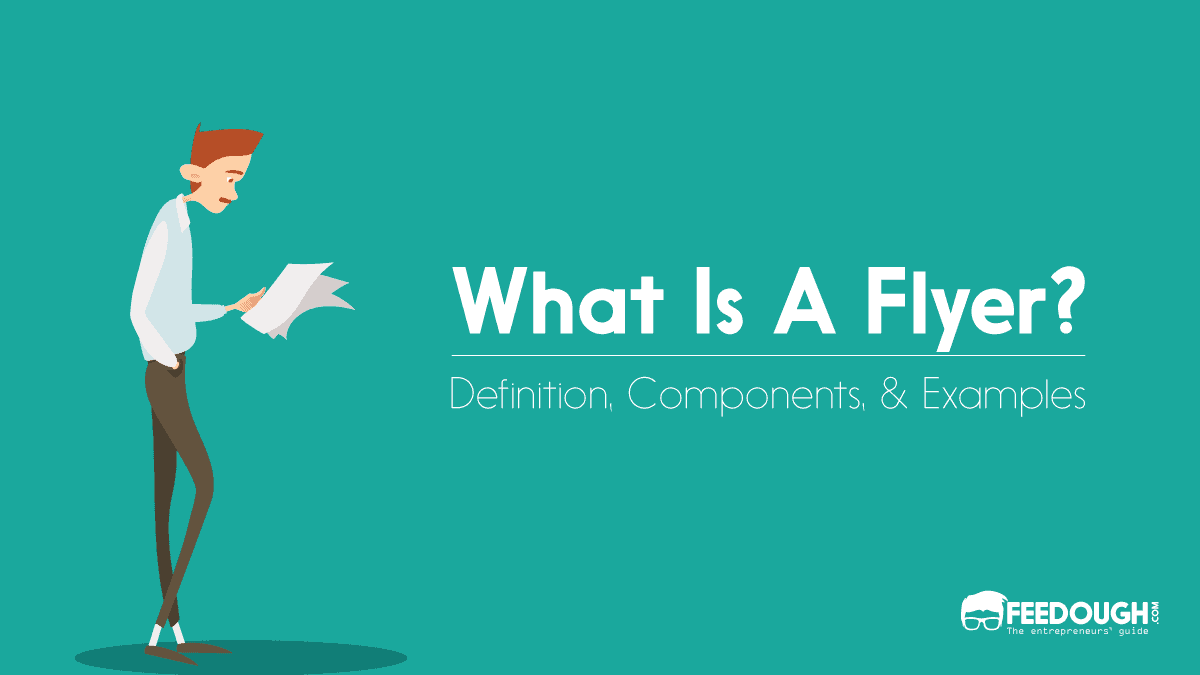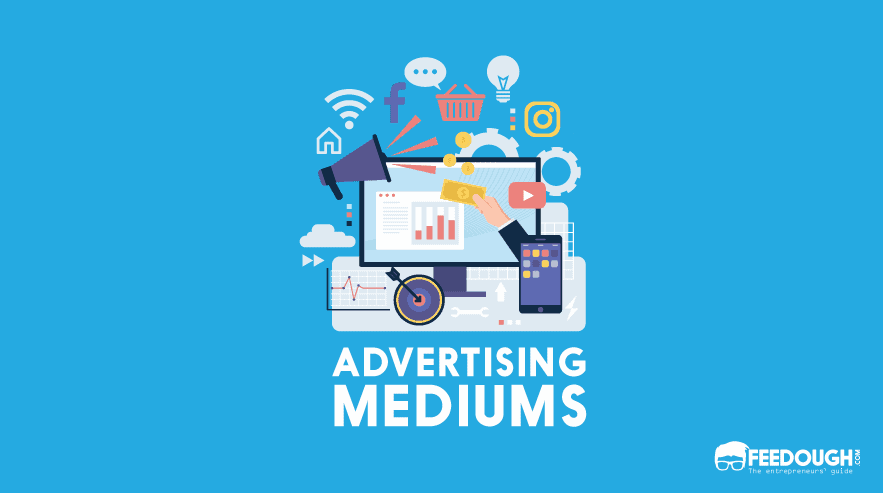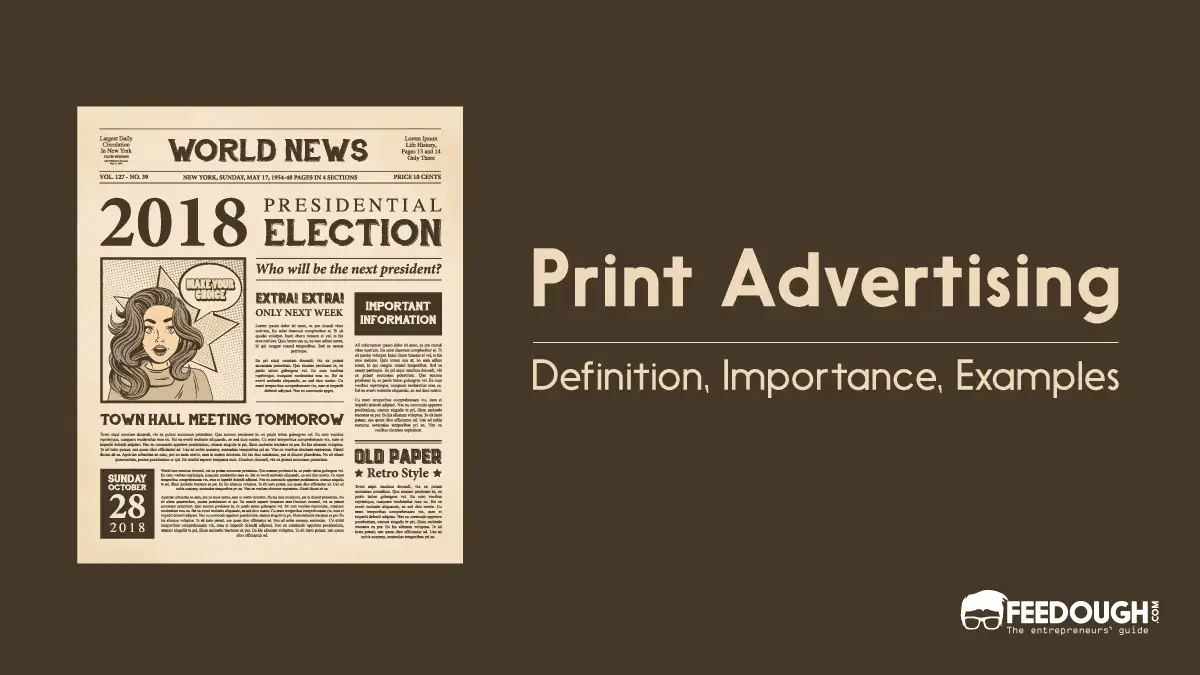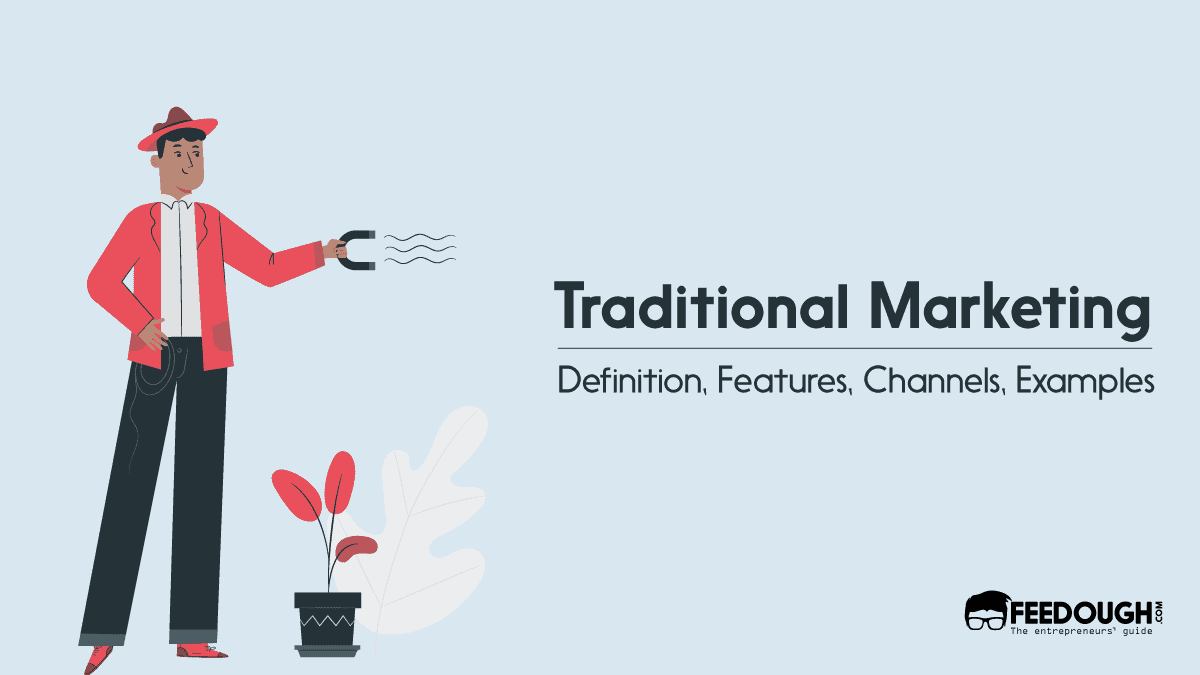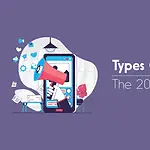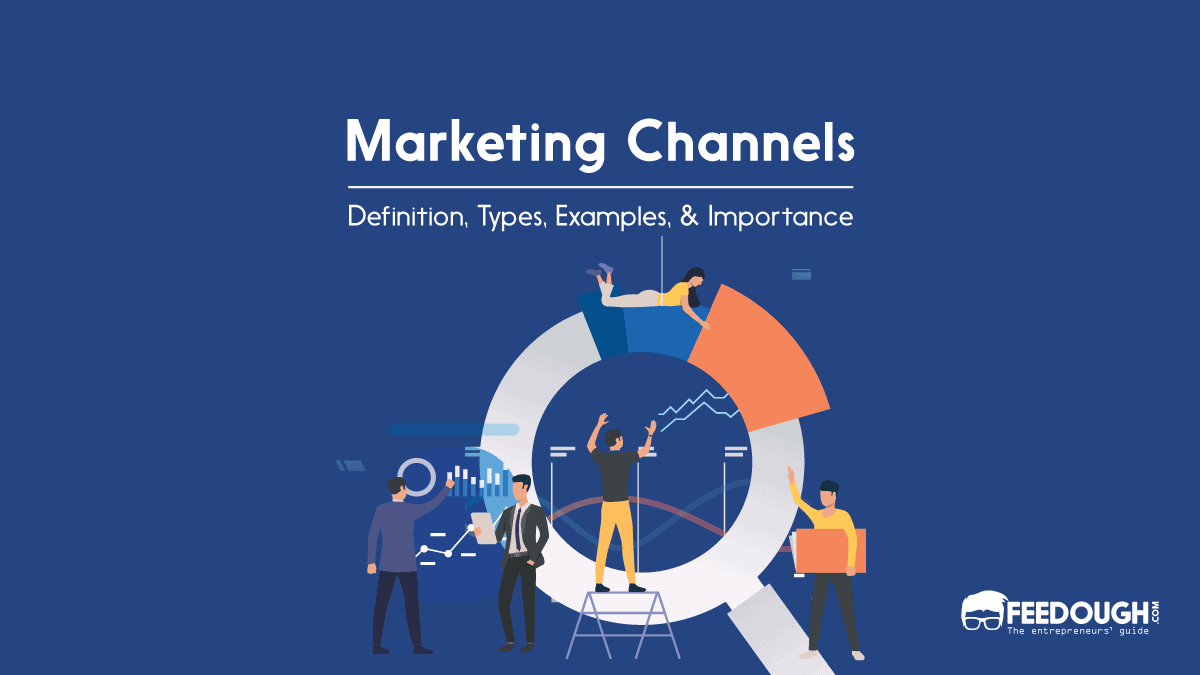Be it a big retail store like Walmart, an amusement park like Disneyland, or just a local restaurant; offline businesses require tangible marketing collateral to convey information about their offering to their target audience in an effective way. A brochure is one such marketing tool that helps dissipate a lot of information in a handy manner.
Though a traditional marketing collateral, even today, brochures are amongst the most prevalent tangible collateral marketers use to educate the target audience about a product, company, or brand.
But what exactly is a brochure, and what purpose does it serve? What are its types, and how is it different from a flyer?
What Is A Brochure?
A brochure is an informative paper document folded into sections or panels, that is mass-produced to fulfil a marketing objective.
It has a single focus – to deliver information about a product, company, brand, event, etc. in an easily accessible format. It is often used as part of a larger marketing campaign and can be distributed either manually or through the mail.
Brochures are usually printed on high-quality paper stock and tend to be a letter, A4, or A5 in size, although they can be produced in any size or shape depending on the objective and information provided.
Purpose Of A Brochure
The key purpose of a brochure is to convey information about a product, company, or service in an easily digestible format.
A well-designed brochure summarises the key information potential customers need to know in an engaging and visually appealing way, forming a go-to resource that they can refer to repeatedly.
Brochures are often used as part of a wider marketing campaign and can be particularly effective when distributed to the right audience.
What Is A Brochure Used For?
A brochure is primarily used as a marketing tool to provide all the relevant information about the offering while aiming at fulfilling a marketing goal like generating leads or boosting sales.
They are often used to:
- Educate the (prospective) customer about what the brand has to offer or what they can expect. In specific scenarios like in a restaurant, it can also be used to list the items on the menu. In events, it can be used as a program guide or a map.
- Highlight an offering’s key features and benefits in a more informative manner.
- Fulfil a marketing strategy like creating brand awareness or generating leads by being a part of a bigger marketing campaign.
- Build trust and credibility by providing relevant information about the company, product, service, or event.
Characteristics Of Brochure
Brochures stand out from other offline marketing collateral by having their own set of characteristics. These are:
- Folded document: Brochures are folded documents that come in different folding styles – half-fold, tri-fold, and Z-fold. This is a characteristic difference between a brochure and a flyer.
- Objective-oriented: Brochures are created with a specific marketing objective or goal in mind. This goal could be anything from creating product awareness to promoting a new service.
- Detailed content: Brochures contain detailed information about the company, product, or service. This is because brochures are not meant for quick reads. They are created so that the target audience can take their time to read and understand the content.
- Branded design: Brochures follow brand identity guidelines. This means that the brochure’s overall design, colour scheme, and typography match the company’s other marketing materials.
- Single focus: Brochures usually only feature one main message along with sub-points. This allows the reader to digest the information without feeling overwhelmed fully.
Types of Brochure
There isn’t a one-size-fits-all when it comes to brochures. Different businesses have different needs and goals, so the type of brochure they create depends on what they are trying to achieve.
Here are some of the most common types of brochures:
Brochure Types Based On Folds
Brochures can be categorised into different types based on the way they fold. The most common folds are:
- Single Fold: Also known as a half-fold or bi-fold, it involves folding a sheet of paper in half, resulting in two panels that are equal in size.
- Tri-Fold: A tri-fold or letter-fold brochure is created by folding a sheet of paper into thirds. This results in three panels that are equal in size.
- Z-Fold: A Z-fold brochure is characterised by three panels that fold in on each other like the folds of an accordion or the letter Z.
- Gate Fold: A gate fold brochure has two folds that open in the middle like a set of double doors. It has a total of six panels, with three panels on each side.
- Double parallel fold: Double parallel fold brochures are created by folding a sheet of paper in half, then folding it in half again, creating two parallel folds aligned in the same direction.
- Double gate fold: Double gate fold brochures are similar to gate fold brochures, except that there are two sets of double doors, for a total of eight panels.
Brochure Types According To Usage
Just like there are different types of brochures, there are also different ways that they can be used. Here are some common usage scenarios for brochures:
- Information brochures: Often used by brands to introduce themselves or provide general information about their products and services.
- Educational brochures: These types of brochures are often used by schools, universities, and other educational institutions to provide information about their programs, facilities, and staff.
- Product brochures: Product brochures are used to promote and sell specific products. They often include product photos, descriptions, and pricing information.
- Event brochures: Used to promote concerts, festivals, fairs, and other types of gatherings, event brochures are typically include event dates, locations, ticket prices, and a list of featured performers or attractions.
- Map brochures: Commonly found in tourism offices and hotels, map brochures provide visitors with maps of the local area, as well as information about nearby attractions, restaurants, and other businesses.
- Menu brochures: Used by restaurants and other food-related businesses as take-away menus, these brochures often include photos and descriptions of popular menu items, as well as pricing information.
Brochure vs Flyer
Brochures and flyers are both printed promotional materials on paper. However, they’re not the same.
While a brochure is more like a booklet that’s meant to be read, a flyer is more like a poster or a single sheet of paper that’s meant to be seen.
Brochure | Flyer | |
|---|---|---|
Definition | A brochure is a printed foldable piece of paper that’s used to convey information about a product, service, brand, or company. | A flyer is a single sheet of paper, usually flat and rectangular, that’s meant to be posted or distributed in public places. |
Use | Brochures are developed to be read, so they’re usually more detailed and informative than flyers. | Flyers are developed to be seen, so they often contain attention-grabbing visuals like images and graphics. |
Characteristics | Brochures are usually printed on high-quality paper stock and have multiple folds (tri-fold, bi-fold, z-fold, half-fold, double parallel fold, gate fold, French door fold, roll fold). | Flyers are usually printed on standard or high-quality paper stock and don’t have any fold. |
Information | Brochures are detailed and informative. | Flyers are more concise and attention-grabbing. |
Brochure Examples
Be it educational institutions, real estate firms, NGOs, event management companies or any other organisation, brochures find their way into a brand’s marketing mix often. Here are some examples of brochures:
Harvard Brochure

The graduate study in Chemistry & Chemical Biology’s brochure for admissions showcases the various aspects of the programme in an easily digestible format. The brochure uses tri-folding and has a follows the brand guidelines of CCB.
Nike Brochure

This is a design art of Nike’s brochure for the even HOOP Summit in Turkey. The brochure has been designed to showcase Nike Flyknit – a new shoe range from the company.
Steps To Creating A Brochure
Creating a brochure can be a great way to introduce a company, organization, product, or service to the target audience and inform them about its benefits. However, a successful brochure requires more than just combining pictures and text. The following are the steps to create a brochure that will grab the attention of the audience:
Tool | Why use it? | Who is it for? | Price | Visit |
|---|---|---|---|---|
Adobe Creative Suite | To create professional brochures from scratch | Professionals | Free for a month or $29.99 a month | |
Canva | To use pre-built templates to create professional, commercial, creative, and more brochures and create one from scratch | Professionals & Newbies | Free or $14.99/month for up to 5 people | |
Visme | To create professional or creative brochures on pre-built templates | Professionals and beginners | Free or $12.25 personal, and $24.75 for business, a month | |
VistaPrint | To design and get the printed copies delivered at doorstep | Professionals or beginners | 25 pieces for $43.9850 for $44.99 100 for $59.99250 starting at $107.99 |
- Define the audience – It is crucial to determine the tone and style of the content and design. Understanding the interests, needs, age, and gender of the target audience will direct the language, visuals, and overall design of the brochure.
- Conduct research – Researching the topic of the brochure is important to ensure the information presented is accurate and relevant. This can be done by gathering data from internal sources such as company reports, or external sources such as industry publications or online research.
- Develop a plan – After having a clear understanding of the audience and the information to convey, an outline of the content should be created. This will define the structure, layout, and design of the brochure, enabling the decision of the overall look and feel of the brochure.
- Choose the brochure type – There are several types of brochures available, such as bi-fold, tri-fold, z-fold, gate-fold, and more. Choose the one that best fits the needs and the information to convey.
- Choose a design software – There are many design software options available, from professional tools like Adobe Creative Suite to user-friendly platforms like Canva and Visme. Choose a software that fits the design expertise and needs to ensure the quality standards are met.
- Select a design style – After choosing the design software, decide on a design style or template that aligns with the outline and appeals to the target audience. Select colours, images, and other visual elements while designing and styling the brochure. Ensure the design is consistent and easy to read and navigate.
- Choose the paper and finish – Decide on the type of paper and finish for the brochure, such as glossy, matte, or uncoated paper, as well as different weights and textures. This will affect the overall look and feel of the brochure and can also impact its durability.
- Share the brochure – Once the brochure is complete, it can be handed to the audience in person at events, trade shows, store windows, conferences, and other places. If they are digital brochures, they can be shared through the website, social media, email marketing, or by embedding them in blog posts.
Go On, Tell Us What You Think!
Did we miss something? Come on! Tell us what you think about our article on what is a brochure in the comments section.
A startup consultant, digital marketer, traveller, and philomath. Aashish has worked with over 20 startups and successfully helped them ideate, raise money, and succeed. When not working, he can be found hiking, camping, and stargazing.
